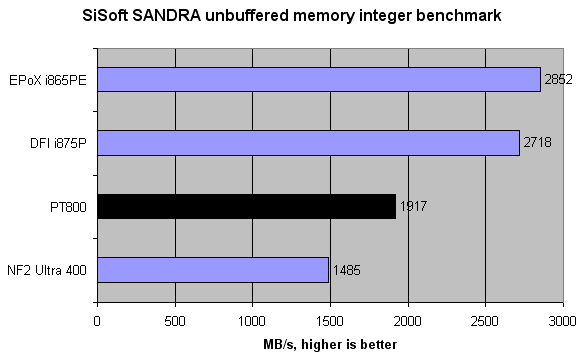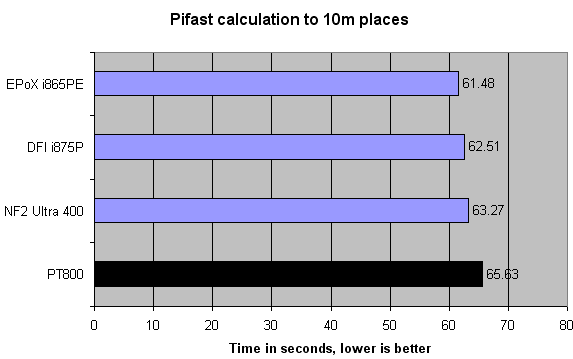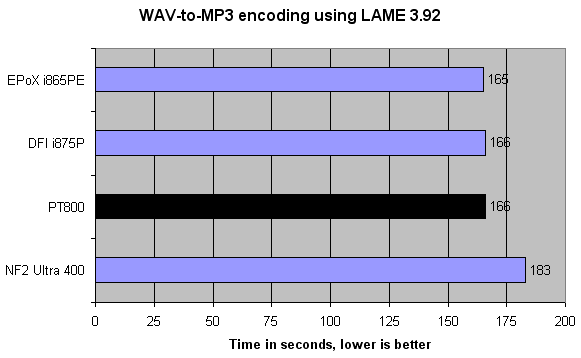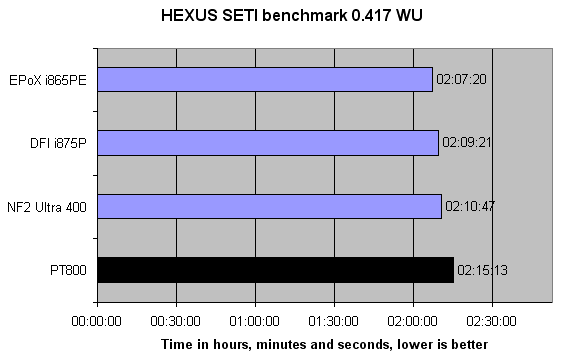Benchmarks I
Subsystem memory performance is usually a reasonable indicator of overall performance if the CPU speed is kept constant. The basic premise is to fulfill the CPU's bandwidth requirement in both overall bandwidth and low latency access requirements. So whilst SiSoft SANDRA's unbuffered memory analysis doesn't explicitly measure the effects of latency, it's still a rough-and-ready indicator of probable performance.

Of course, dual-channel chipsets will have more available bandwidth than the PT800's single-channel setup, but the difference is far less than the expected double. Out of a possible and theoretical 3.2GB/s at 200FSB, the PT800 manages to extract around 60% unbuffered bandwidth, according to SANDRA. That's pretty impressive, and it's some way above a 200FSB i845PE chipset's. Could there be some real hope for the PT800 yet ?. A small issue is the higher performance of the EPoX Springdale-based board. A newer BIOS propels it past the decent DFI Canterwood board's benchmark.

A little off the pace in Pifast, our first real-world benchmark that calculates the constant Pi to 10m places. Its reliance on lots of low latency bandwidth is tailor-made for the Intel dual-channel duo. Still, the PT800 isn't all that far behind.

The PT800 shows itself as an adept WAV cruncher. A 600MB+ WAV file is crunched into 192kb/s MP3 format. The CPU's overall speed is more important than available bandwidth here, we feel.

It's none too shabby at SETI, either. The performance of this single-channel chipset is beyond our expectations, really.









